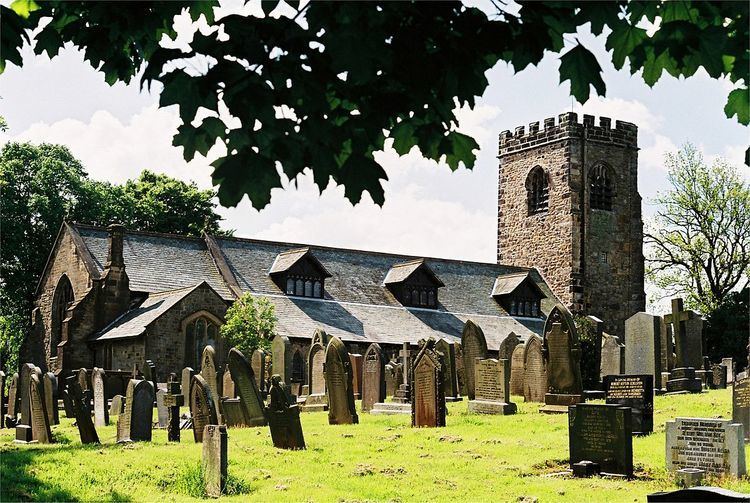OS grid reference SD 55951 36922 Country England Functional status Active Height 18 m | Heritage designation Grade II* Phone +44 1995 640269 | |
 | ||
Similar St Mary's Church - Mellor, St Lawrence's Church - B, St Peter's Church - Preston, St Mark's Church - Preston, Church of St George the Martyr | ||
The Church of St Mary the Virgin is an Anglican church in Goosnargh, a village north of Preston in Lancashire, England. The church dates from the Middle Ages; it was enlarged in the 16th century and restored twice in the 19th century.
Contents
St Mary's is an active parish church in the Diocese of Blackburn and the archdeaconry of Lancaster. It has been designated a Grade II* listed building by English Heritage.
History
St Mary's Church dates from the Middle Ages; it was probably in existence by 1281, and certainly by 1330. It was probably first established as a chapel of ease to St Michael's Church in Kirkham. It was enlarged in the 16th century. The church was restored in 1868–1869 by Lancaster architecture firm Paley and Austin. They renovated the roof, repaired window stonework and lowered the floor. Seating in the nave and aisles was altered. Further restoration took place in 1895.
Present day and assessment
St Mary's was designated a Grade II* listed building on 11 November 1966. The Grade II* designation—the second highest of the three grades—is for "particularly important buildings of more than special interest". An active church in the Church of England, St Mary's is part of the diocese of Blackburn, which is in the Province of York. It is in the archdeaconry of Lancaster and the Deanery of Garstang.
Exterior
St Mary's is constructed of sandstone rubble with gritstone dressings and has slate roofs. Its plan consists of a nave with aisles to the north and south, a west tower and a chancel to the east. There is a porch to the south-west of the south aisle, and a vestry north of the chancel. The tower is 60 feet (18 m) tall. It is of three stages and has a stair turret to the south-east. There are diagonal six-stage buttresses at the west corners and a square three-stage buttress at the north-east corner. The tower has a crenellated parapet. It has three-light belfry louvres that have Perpendicular style tracery and a rounded arched doorway.
The south aisle is of four bays and has low buttresses. The east window in the chancel is recessed and has five plain, pointed lights.
Interior and fittings
The nave measures 70 feet 6 inches (21.49 m) by 20 feet 6 inches (6.25 m). It is separated from the aisles by arcades with pointed arches and octagonal piers. The Middleton Chapel is at the east end of the north aisle and has by wooden screens that date from the late 17th or 18th century. In the south aisle there is a stone baptismal font that is 1 foot 5 inches (0.43 m) tall and has a large square bowl. It possibly dates from the 15th century.
Stained glass in the church includes work by Shrigley and Hunt, Harry Stammers and Heaton, Butler and Bayne.
Churchyard
The gravestones in the churchyard include one dated 1668. There are war graves of four soldiers of World War I and one of World War II. To the south of the church there is a sandstone sundial. It dates from the 18th century and has two circular steps with a pedestal shaped like a vase. It has been designated as a Grade II listed building. South of the chancel is the sandstone base of a preaching cross from the late Middle Ages. The cross base also has a Grade II designation.
